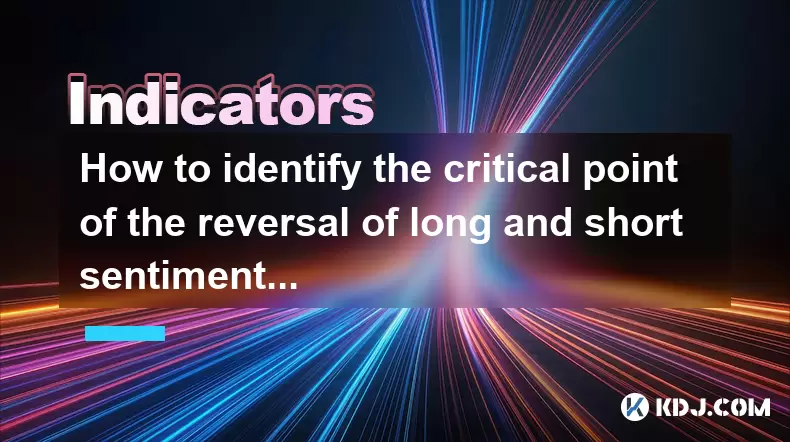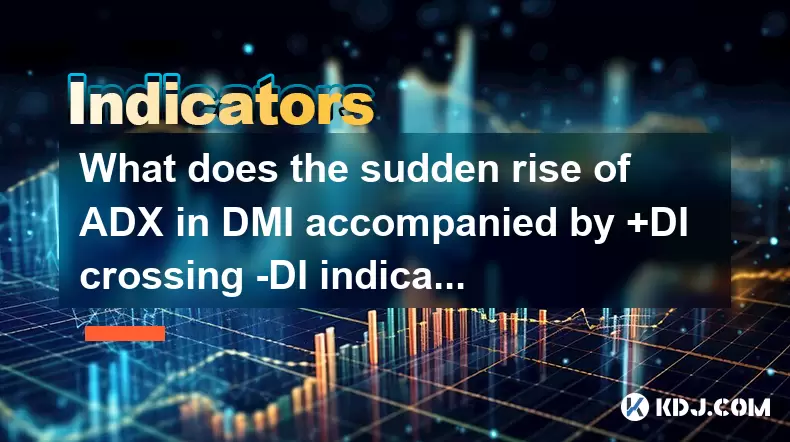-
 Bitcoin
Bitcoin $117000
-1.70% -
 Ethereum
Ethereum $3660
-1.83% -
 XRP
XRP $3.095
-4.17% -
 Tether USDt
Tether USDt $1.000
-0.05% -
 BNB
BNB $776.9
-0.43% -
 Solana
Solana $182.6
-3.02% -
 USDC
USDC $0.9999
-0.04% -
 Dogecoin
Dogecoin $0.2288
-4.20% -
 TRON
TRON $0.3156
0.27% -
 Cardano
Cardano $0.7981
-2.47% -
 Hyperliquid
Hyperliquid $43.01
0.65% -
 Sui
Sui $3.846
0.40% -
 Stellar
Stellar $0.4207
-2.89% -
 Chainlink
Chainlink $17.83
-2.99% -
 Hedera
Hedera $0.2545
4.25% -
 Bitcoin Cash
Bitcoin Cash $540.4
4.67% -
 Avalanche
Avalanche $23.52
-2.36% -
 Litecoin
Litecoin $111.8
-1.37% -
 UNUS SED LEO
UNUS SED LEO $8.983
0.13% -
 Shiba Inu
Shiba Inu $0.00001370
-1.04% -
 Toncoin
Toncoin $3.145
-0.72% -
 Ethena USDe
Ethena USDe $1.001
-0.02% -
 Polkadot
Polkadot $4.012
-1.53% -
 Uniswap
Uniswap $10.18
-2.51% -
 Monero
Monero $323.5
0.38% -
 Dai
Dai $1.000
0.00% -
 Bitget Token
Bitget Token $4.512
-2.65% -
 Pepe
Pepe $0.00001221
-4.11% -
 Aave
Aave $290.9
-0.50% -
 Cronos
Cronos $0.1287
1.19%
K-Line Reverse Packageの組み合わせを介して長く短い感情の反転の重要なポイントを識別する方法は?
K-Line Reverse Packageの組み合わせは、特定のチャートパターンとボリューム分析を使用して、暗号市場で長いセンチメントの逆転の重要なポイントを特定するのに役立ちます。
2025/06/01 15:36

暗号通貨取引の世界では、市場の感情を理解することは、情報に基づいた決定を下すために重要です。長くて短い感情の潜在的な反転を測定する1つの効果的な方法は、K-Line逆パッケージの組み合わせの分析によるものです。この手法には、市場の感情の変化を示す可能性のあるKラインチャート内の特定のパターンと形成を研究することが含まれます。この記事では、K-Line Reverse Packageの組み合わせを使用して、長くて短い感情の反転の重要なポイントを識別する方法を掘り下げます。
K-Lineチャートの理解
Candlestickチャートとしても知られるK-Lineチャートは、経時的に価格の動きを視覚化するための暗号通貨トレーダーの間で人気のあるツールです。各k-lineは、特定の時間枠内の資産のオープン、ハイ、低、および閉鎖の価格を表します。 Kラインの本体は、開幕価格と終値の間の範囲を示しますが、ウィックスまたは影は、期間中の高価格と低価格を示しています。
感情の逆転を特定するためにKラインチャートを効果的に使用するには、トレーダーは基本的なコンポーネントとそれらが異なるパターンを形成する方法を理解する必要があります。これらのパターンは、特定の方法で組み合わせると、市場の感情における潜在的な反転を示すことができます。
K-Line Reverse Packageの組み合わせを識別します
K-Line Reverse Packageの組み合わせは、市場の感情の逆転を示唆するK-Lineパターンの特定のシーケンスを指します。これらの組み合わせは、通常、一連の弱気で強気のKラインを伴います。これは、一緒に分析すると、長い位置からショートポジション、またはその逆への潜在的なシフトについての洞察を提供します。
1つの一般的な逆パッケージの組み合わせは、強気の包囲パターンに続いて弱気のハラミパターンです。強気の包囲パターンは、小さな弱気なKラインに続いて、以前の弱気kラインを完全に巻き込む大きな強気なk-lineが続くと発生します。これは、弱気から強気感情への潜在的な変化を示唆しています。これに続いて、より大きな弱気なk-lineの本体に小さな強気なk lineが含まれている弱気のハラミパターンが続くと、弱気感情への逆転の可能性を示すことができます。
もう1つの注目すべき組み合わせは、モーニングスターパターンに続いてイブニングスターパターンが続きます。モーニングスターパターンは、強気の逆転を示す3 kラインパターンです。それは、長い弱気なKライン、以前の弱気k-ラインの下にギャップする小さなk-line、および小さなk-lineの上にギャップする長い強気なk-lineで構成されています。これに続いて、長い強気なk-line、以前の強気なk-lineの上に隙間をとる小さなk lineで構成される弱気の反転パターンであるイブニングスターパターンが続くと、小さなkラインの下にギャップする長い弱気なk lineであり、弱気感情へのシフトを示すことができます。
反転の重要な点を分析します
長く短い感情の逆転の重要なポイントを特定するには、トレーダーはK-Lineの逆パッケージの組み合わせを綿密に監視し、シフトが差し迫っていることを示唆する特定の指標を探す必要があります。重要な指標の1つは、Kラインパターンに伴うボリュームです。逆パッケージの組み合わせの形成中の体積の大幅な増加は、潜在的な反転の強度を確認できます。
考慮すべきもう1つの重要な要素は、サポートと抵抗レベルです。 K-Line Reverse Packageの組み合わせが主要なサポートまたは抵抗レベルの近くに形成されると、感情の逆転の可能性が強いことを示す可能性があります。トレーダーはこれらのレベルに注意を払い、潜在的なシフトの追加の確認としてそれらを使用する必要があります。
さらに、相対強度指数(RSI)や移動平均収束発散(MACD)などの技術的指標は、潜在的な反転の勢いと強度に関するさらなる洞察を提供できます。これらのインジケーターがK-Line Reverse Packageの組み合わせと整合すると、特定された重要な反転点に対する信頼性を高める可能性があります。
重要なポイントを特定するための実用的な手順
K-Line Reverse Packageの組み合わせを使用して、長く短い感情の反転の重要なポイントを特定するための実用的な手順を以下に示します。
- 時間枠を選択します。取引戦略と一致する時間枠を選択します。一般的な時間枠には、1分、5分、15分、1時間、4時間、毎日のチャートが含まれます。
- K-Lineパターンを特定する:強気の包囲、弱気のハラミ、モーニングスター、イブニングスターパターンなどの特定のKラインパターンを探します。
- 逆パッケージの組み合わせを分析します:感情の潜在的な逆転を示唆するk-lineパターンのシーケンスを特定します。たとえば、強気の包囲パターンに続いて、弱気のハラミパターンが続きます。
- モニターボリューム:Kラインパターンに伴うボリュームに注意してください。体積の大幅な増加は、潜在的な反転の強度を確認できます。
- サポートレベルと抵抗レベルを確認します。これにより、センチメントの逆転の可能性が高まる可能性があるため、リバースパッケージの組み合わせが主要なサポートレベルまたは抵抗レベルに近いかどうかを判断します。
- 技術指標を使用してください。RSIやMACDなどの技術的指標を組み込み、潜在的な反転の勢いと強さに関するさらなる洞察を得ます。
- 重要なポイントを確認します。すべての要因が調整されたら、長いセンチメントと短い感情の逆転の重要なポイントを確認し、適切な取引措置を講じます。
ケーススタディ:Bitcoinで逆転を特定する
センチメントの逆転の重要な点を特定する際のK-Line逆パッケージの組み合わせの適用を説明するために、Bitcoin(BTC)を含むケーススタディを考えてみましょう。
このシナリオでは、Bitcoinの4時間チャートに強気の巻き込みパターンを観察し、弱気から強気感情への潜在的な変化を示唆しています。このパターンの後には、弱気なハラミパターンが続き、弱気感情への逆転の可能性を示しています。
より緊密な分析で、強気包囲パターンの形成中の体積が大幅に増加し、潜在的な強気反転の強度が確認されていることに気付きます。さらに、パターンは主要なサポートレベルの近くで形成され、感情の変化の可能性をさらにサポートします。
調査結果をさらに検証するために、RSIおよびMACDインジケーターを確認します。 RSIは売られた状態を示しており、潜在的な強気の逆転を示唆している一方、MACDは強気のクロスオーバーを示し、勢いの変化を確認します。
これらの観察に基づいて、Bitcoinの長くて短い感情の逆転の重要な点を自信を持って特定できます。トレーダーは、この情報を使用して、それに応じてポジションを調整でき、市場の感情の潜在的な変化を利用できます。
よくある質問
Q:K-Lineの逆パッケージの組み合わせは、すべての暗号通貨で使用できますか?
A:はい、K-Line Reverse Packageの組み合わせは、価格分析にK-Lineチャートを使用する暗号通貨に適用できます。ただし、有効性は、特定の暗号通貨の流動性とボラティリティによって異なる場合があります。
Q:トレーダーは、どのくらいの頻度でK-Line Reverse Packageの組み合わせを確認する必要がありますか?
A:K-Lineの逆パッケージの組み合わせをチェックする頻度は、トレーダーの戦略と時間枠に依存します。短期トレーダーの場合、15分から1時間ごとにチェックする必要がありますが、長期トレーダーは毎日または毎週のチャートをチェックする場合があります。
Q:K-Lineの逆パッケージの組み合わせを識別するのに役立つツールやソフトウェアはありますか?
A:はい、K-Line Reverse Packageの組み合わせを識別するための組み込みパターン認識機能を提供するさまざまなトレーディングプラットフォームとソフトウェアツールがあります。例には、TradingView、Metatrader、CryptoHopperが含まれます。
Q:K-Line Reverse Packageの組み合わせは、他の分析方法と組み合わせて使用できますか?
A:絶対に、K-Line Reverse Packageの組み合わせは、基本的な分析、感情分析、その他の技術指標などの他の分析方法と組み合わせて使用して、市場のより包括的な見解を提供し、感情の逆転を特定する精度を高めることができます。
免責事項:info@kdj.com
提供される情報は取引に関するアドバイスではありません。 kdj.com は、この記事で提供される情報に基づいて行われた投資に対して一切の責任を負いません。暗号通貨は変動性が高いため、十分な調査を行った上で慎重に投資することを強くお勧めします。
このウェブサイトで使用されているコンテンツが著作権を侵害していると思われる場合は、直ちに当社 (info@kdj.com) までご連絡ください。速やかに削除させていただきます。
- UAEのデジタル資産革命:Stablecoinの規制が中心になります
- 2025-07-26 10:40:11
- 仮想毎週のドロップ:回復分析とプライバシープッシュ
- 2025-07-26 08:50:11
- ビットコイン、シンシア・ラミス、フリーダム・マネー:ニューヨーカーのテイク
- 2025-07-26 08:30:11
- ずんぐりしたペンギン、暗号の価格、およびアルトシーズンの話題:誇大広告は何ですか?
- 2025-07-26 10:51:48
- Crypto Gainers、Top 10、Week 30:Altcoinsはトレンドに逆らっています
- 2025-07-26 08:55:12
- Solana、Altcoins、およびCoinbase:バズは何ですか?
- 2025-07-26 06:30:12
関連知識

移動平均が初めてショートポジションに配置された後にリバウンドがブロックされるということはどういう意味ですか?
2025-07-26 10:51:10
短期移動平均構成の理解トレーダーは、移動平均で「ショートポジションアレンジメント」を参照する場合、短期的な移動平均が長期的な平均を下回る技術セットアップを説明しています。この構成は通常、弱気な傾向を示しています。たとえば、 5期間の移動平均(MA)が10期間のMAの下を通過し、10期間のMAがすでに...

5日間連続して5日間の移動平均に沿って価格が上昇した場合、それはどういう意味ですか?
2025-07-26 08:07:37
暗号通貨取引における5日間の移動平均を理解する5日間の移動平均(5DMA)は、過去5日間にわたって資産の平均終値を計算する暗号通貨取引で広く使用されている技術指標です。トレーダーはこの指標を使用して、短期的な価格の変動を滑らかにし、根本的な傾向を特定します。 5日間の移動平均に沿って5日間連続して価...

価格が60日間の移動平均を大量に壊したが、翌日は縮小するとはどういう意味ですか?
2025-07-26 06:01:03
暗号通貨取引における60日間の移動平均を理解する60日間の移動平均(60DMA)は、過去60日間にわたって価格データを滑らかにする暗号通貨市場で広く使用されている技術指標です。これは、短期的な価格の変動を除外することにより、トレーダーが全体的な傾向の方向を特定するのに役立ちます。現在の価格が60DM...

+di Crossing -Diを伴うDMIのADXの突然の上昇は何を示していますか?
2025-07-26 13:21:19
DMIとそのコアコンポーネントを理解するDirectional Movement Index(DMI)は、暗号通貨価格の動きの傾向の存在と強度を決定するために使用されるテクニカル分析ツールです。これは、3つの重要なコンポーネントで構成されています。平均方向指数(ADX) 、正の方向指標(+DI) 、...

OBVが新しい高値に達し続けているが、価格が停滞しているとはどういう意味ですか?
2025-07-26 09:57:50
オンバランスボリューム(obv)インジケーターの理解オンバランスボリューム(OBV)は、ボリュームフローを使用して在庫または暗号通貨の価格の変化を予測するテクニカル分析指標です。 Joe Granvilleによって開発されたOBVは、単純な前提で動作します。ボリュームは価格の動きに先行します。計算は...

EMA12とEMA26のゴールデンクロスは何を反映していますか?
2025-07-26 06:44:03
EMA12とEMA26のゴールデンクロスを理解していますゴールデンクロスは、暗号通貨市場で広く認識されている技術指標であり、潜在的な強気の逆転を示しています。 12期の指数移動平均(EMA12)が26期の指数移動平均(EMA26)を超えると発生します。このパターンは、短期的な勢いが長期的な勢いを超え...

移動平均が初めてショートポジションに配置された後にリバウンドがブロックされるということはどういう意味ですか?
2025-07-26 10:51:10
短期移動平均構成の理解トレーダーは、移動平均で「ショートポジションアレンジメント」を参照する場合、短期的な移動平均が長期的な平均を下回る技術セットアップを説明しています。この構成は通常、弱気な傾向を示しています。たとえば、 5期間の移動平均(MA)が10期間のMAの下を通過し、10期間のMAがすでに...

5日間連続して5日間の移動平均に沿って価格が上昇した場合、それはどういう意味ですか?
2025-07-26 08:07:37
暗号通貨取引における5日間の移動平均を理解する5日間の移動平均(5DMA)は、過去5日間にわたって資産の平均終値を計算する暗号通貨取引で広く使用されている技術指標です。トレーダーはこの指標を使用して、短期的な価格の変動を滑らかにし、根本的な傾向を特定します。 5日間の移動平均に沿って5日間連続して価...

価格が60日間の移動平均を大量に壊したが、翌日は縮小するとはどういう意味ですか?
2025-07-26 06:01:03
暗号通貨取引における60日間の移動平均を理解する60日間の移動平均(60DMA)は、過去60日間にわたって価格データを滑らかにする暗号通貨市場で広く使用されている技術指標です。これは、短期的な価格の変動を除外することにより、トレーダーが全体的な傾向の方向を特定するのに役立ちます。現在の価格が60DM...

+di Crossing -Diを伴うDMIのADXの突然の上昇は何を示していますか?
2025-07-26 13:21:19
DMIとそのコアコンポーネントを理解するDirectional Movement Index(DMI)は、暗号通貨価格の動きの傾向の存在と強度を決定するために使用されるテクニカル分析ツールです。これは、3つの重要なコンポーネントで構成されています。平均方向指数(ADX) 、正の方向指標(+DI) 、...

OBVが新しい高値に達し続けているが、価格が停滞しているとはどういう意味ですか?
2025-07-26 09:57:50
オンバランスボリューム(obv)インジケーターの理解オンバランスボリューム(OBV)は、ボリュームフローを使用して在庫または暗号通貨の価格の変化を予測するテクニカル分析指標です。 Joe Granvilleによって開発されたOBVは、単純な前提で動作します。ボリュームは価格の動きに先行します。計算は...

EMA12とEMA26のゴールデンクロスは何を反映していますか?
2025-07-26 06:44:03
EMA12とEMA26のゴールデンクロスを理解していますゴールデンクロスは、暗号通貨市場で広く認識されている技術指標であり、潜在的な強気の逆転を示しています。 12期の指数移動平均(EMA12)が26期の指数移動平均(EMA26)を超えると発生します。このパターンは、短期的な勢いが長期的な勢いを超え...
すべての記事を見る

























































































